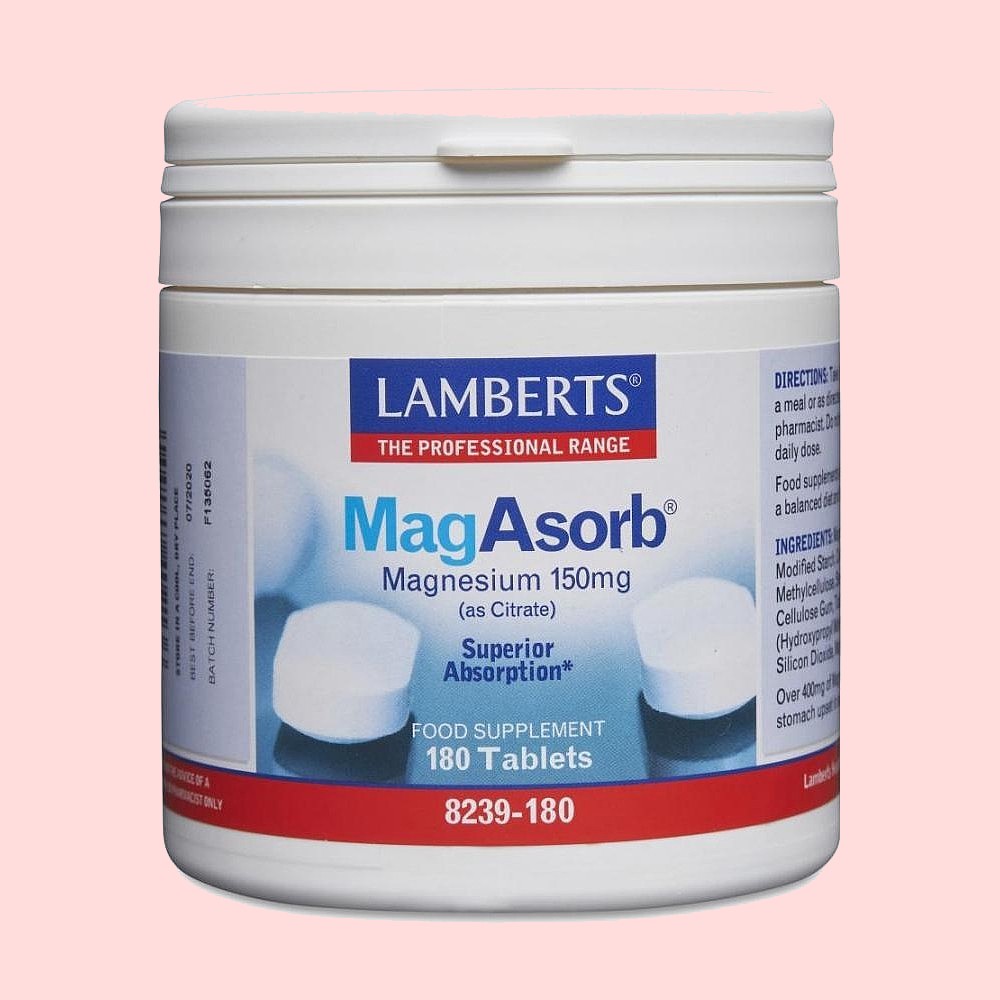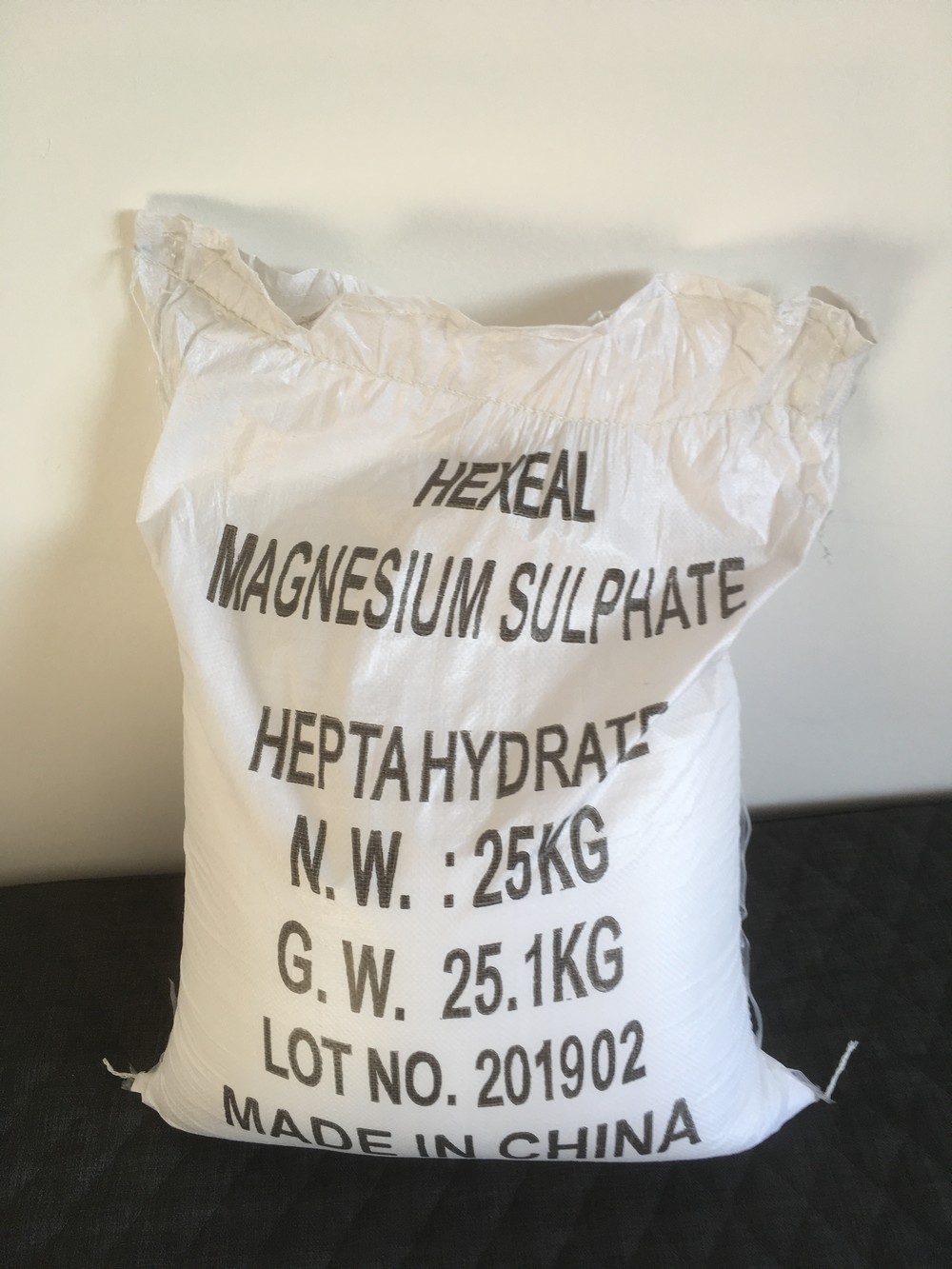Magnesium
Magnesium is important for many aspects of good health. It is responsible for over 300, (some now say 700) biochemical reactions in the body and impacts blood pressure, metabolism and immune function. It maintains normal muscle and nerve function, keeps heart rhythm steady and maintains bone strength. It is also important for inhibiting blood clots by thinning the blood, blocking Calcium uptake, and relaxing blood vessels.
Dr. Carolyn Dean author of many books about Magnesium and minerals and in particular her best selling and ground breaking book The Magnesium Miracle details how many people are dangerously deficient in this vitally important mineral. She maintains that repletion of Magnesium can prevent or alleviate many health conditions including Fibromyalgia.
Magnesium Deficiency
It has been estimated that 75% - 90% of the western populations are deficient in the mineral Magnesium. It has been reported that Magnesium deficiency is the single largest health problem in our modern world.
In the UK the recommended daily intake for adults is 270mg for women and 300mg for men, but few of us, it seems, can maintain these levels.
 Junk Food
Junk FoodThis is because our modern diet of processed foods and junk food just don't contain sufficient nutrients and minerals. To compound this consuming high levels of sugar, alcohol, processed grains and caffeine force the kidneys to expel Magnesium, depleting our already low levels further still. It is no wonder that so many of us are deplete in vital minerals.
Even, if you avoid junk food and think you eat healthily and consume plenty of vegetables and lean meats you may be surprised to learn of the lack of nutrients, including Magnesium that is available to us these days.
Poor and depleted soil due to modern intensive farming techniques mean that vegetables and grains (and meat from animals that feed on these plants) are lower in nutrients, including Magnesium. It is estimated that Magnesium content in vegetables has declined by as much as 80% since 1950.
Cooking methods such as boiling and steaming can also deplete any remaining Magnesium sources in foods.
Also the use of chemicals such as fluoride and chlorine in our water supply makes Magnesium less plentiful since these chemicals can bind to Magnesium.
 Pharmaceutical Drugs
Pharmaceutical DrugsMagnesium is further depleted by many pharmaceutical drugs including estrogen in the form of oral contraception and HRT patches and pills for menopausal women. Other prescription drugs such as antibiotics, cortisone, painkillers, diuretics and blood pressure medications are known to deplete Magnesium in the body. This happens either because they inhibit absorption or by increased kidney excretion.
Even over the counter remedies such as antacids - Alka-Seltzer and Rennies, Tums etc. or Acid Blockers such as Zantac, Omeprazole and Nexium deplete Magnesium levels.
Add to this the high stress levels that modern life brings - stress hormone production needs high levels of Magnesium, and you can understand the high rates of Magnesium deficiency.
Having Fibromyalgia itself is very stressful, so it is not surprising that our Magnesium levels will be low.
Magnesium Deficiency and Overlapping Symptoms of Fibromyalgia
Depression
Irritability
Anxiety
Mood swings
Chronic fatigue
Lethargy
Impaired memory
Poor cognitive function
Insomnia
Muscle weakness
Muscle spasms
Muscle cramps
Migraine headaches
Sound sensitivity
Light sensitivity
Testing for Magnesium Levels
There is a problem with testing the blood serum for Magnesium levels and that is that around 99% is stored inside the cells or in bones. So your doctor could order a blood test to check your Magnesium levels but it is likely to come back normal. This is because it is ONLY the Magnesium levels in the blood serum that is being tested and not how much or how little is in your cells or bones.
‘A serum test for magnesium is actually worse than ineffective, because a test result that is within normal limits lends a false sense of security about the status of the mineral in the body. It also explains why doctors don’t recognize magnesium deficiency; they assume serum magnesium levels are an accurate measure of all the magnesium in the body.’ Dr. Carolyn Dean
I’d read the excellent work of Dr Carolyn Dean whose mission has been to educate and promote the health restorative properties of Magnesium in her publications such as the Magnesium Miracle.
Once aware of the health benefits of this miracle mineral and the acceptance that I was very likely to be dangerously and massively deficient in it, (as most people are and in particular women with Fibromyalgia) I decided to allow my body to become replete in Magnesium.
Now to do this I could accept the advice and information given by the UK Government’s Department of Health and adhered to by the National Health Service (NHS) that the recommended daily dose of Magnesium in the UK is 270mg for women and 300mg for men. And that I should be able to get all the Magnesium I need from my daily diet. I already knew that I ate plenty of Magnesium rich foods such as green leafy vegetables, nuts and meat.
So do I blindly obey orders given by my ‘superiors’, (I was brought up to respect the word of my elders and betters which included teachers, policemen and doctors) and continue to be very ill or break ranks and go against them?
I decided on the latter.
Magnesium Repletion
Foods rich in Magnesium
 Magnesium Rich Foods
Magnesium Rich FoodsFoods rich in Magnesium include green leafy vegetables such as spinach, Swiss chard and kale. Nuts and seeds also contain rich amounts of Magnesium. Good examples are cashews, almonds, sesame seeds, sunflower seeds and pumpkin seeds.
Grains such as quinoa, brown rice, oats, buckwheat and barley are also good sources of Magnesium, as are beans such as kidney beans, black beans and chick peas.
But by far my favourite source of Magnesium is dark chocolate.
Magnesium Supplements
 Magnesium Citrate
Magnesium CitrateThe great news about Magnesium is that you can take it orally or topically which means swallowing Magnesium supplements or applying Magnesium through the skin.
After much research the consensus seemed to be that you could take as much Magnesium orally until it caused you problems with stomach pains and diarrhoea. I soon learnt that my limit was 600mg in the form of Magnesium citrate supplements. This was more than double the RDA advocated by the Government the NHS and the GPs across the land.
I then looked at ways to increase my Magnesium intake further by topical methods.
You can buy lotions and creams containing Magnesium or you can make your own Magnesium oil by mixing one part distilled water to one part Epsom salts. I tried this but found it scratchy and irritating.
 Magnesium Sulphate
Magnesium SulphateSo, rather than dabbing Magnesium oils and lotions on my poor aching body, I decided to soak in a bathtub that contained Epsom salts by the bucket load. Epsom salts is Magnesium Sulphate and can be bought in small boxes or bags from health food stores or supermarkets. They are usually sold in packs of around half a kilo and the advice is to throw a handful in a bath tub full of water.
But I wanted to absolutely ensure that I was completely replete in Magnesium. So I bought and still buy 25kg sacks of pharmaceutical grade Magnesium Sulphate from Amazon, (much cheaper to buy in bulk) and use at least 1 – 3 kgs in my bath tub. You can soak your feet in a bowl or bucket if you don’t have a bath tub.
‘But surely this must be too much?’ I hear you cry. In answer I have to say, no, not at all. Becoming more popular is float therapy where you lie in a floatation tank or float pod, (about double the size of a normal bath tub) that contains body temperature water and Magnesium Sulphate known as Epsom salts.
 Epsom Salts Bath
Epsom Salts BathEpsom salts floatation tanks contain as much as 500kg of Magnesium Sulphate in them. Much research and development has been undertaken in the health benefits of soaking in floatation tanks. Here in the UK the company Floatworks state ‘The more regularly you float the better. Just like any activity, the more you practice the better you become, and the more cumulative effects you will see.’
So you can see that no upper limit has been placed on how many soaks you can have in very high density Magnesium Sulphate.
Because currently there isn’t a floatation tank in my locality I had to make do at home.
I take at least two Epsom salts baths a week and soak for around 20 minutes. You can soak for longer but the full benefits of the Magnesium are obtained in around 15 minutes. I shower after taking an Epsom salts bath to rinse of the Magnesium.
My Experience with Magnesium
My experience with Magnesium has been quite extensive.
There are many forms of Magnesium and getting to grips with the different types can be quite mind boggling, particularly if you dropped chemistry, science and biology at age 13, as I did.
So this is what I found worked for me. (You can read further on the intricacies of the different types later on.)
Oral Magnesium
I have used, and continue to use Magnesium Citrate as a mineral supplement in capsule form. A warning comes with taking Magnesium orally, as too much can cause diarrhoea. You can start on a relatively low dose and gradually increase until you get diarrhoea and then of course decrease until you find your comfortable level. I take 600mg per day.
Transdermal Magnesium
Applying Magnesium directly onto the skin means easy absorption straight into your cells and bypasses the digestive system. This also means no chance of diarrhoea and is much kinder on the GI tract.
You can either apply transdermal or topical Magnesium in the form of an oil or in a bath.
Magnesium Oil
When trying to get to optimal Magnesium repletion I also used Magnesium oil. You can buy this over the counter as a Magnesium Spray from pharmacists or you can make your own DIY Magnesium oil. You will need some Epsom Salts (Magnesium Sulphate, sometimes spelt Sulfate) and warm distilled, filtered or bottled water. Simply mix equal parts of the warm water with Epsom Salts. This mix produces an oily liquid that you can apply to your body.
You can add a few drops of essential oils if you want to. I used a blend of Lavender, Rosemary, Chamomile and Helichrysum essential oils.
I used it liberally each day on my back, with help from my husband, and my abdomen. It can sting at first, but you do get used to it. You will need to bathe or shower after about 15 - 20 minutes as the residue can sting.
Soaking in an Epsom Salt Bath
At my worst I bathed twice daily in a bath containing at least a half kilo (one pound) of Epsom Salts (Magnesium Sulphate, sometimes spelt Sulfate). I bought industrial sized sacks of Magnesium sulphate because I was using so much.
I used so much because I was so desperately ill, fatigued and in terrible pain.
Nowadays I tend to take an Epsom salt bath once or twice a week and I also add my blend of pain reliving essential oils (see above).
Soaking in an Epsom salt bath relieved my aches and pains and very much relaxed me. You get the therapeutic effects of the Epsom salts within 15 - 20 minutes, so you do not need to soak for longer, unless you want to.
Top Tip. Rinse yourself in clean water after soaking as the Epsom salts can leave a powdery residue on the skin. Plus if you use a lot of Epsom salts and fail to rinse it can cause redness and burning on the skin.
If you do not have a bath tub you can soak your feet in a bowl of warm water and add Epsom salts.
Types of Magnesium
There are other forms of oral Magnesium supplements including Magnesium Oxide but this is not as highly recommended as Magnesium Citrate for fatigue, low energy and pain relief.
Magnesium Oxide
You'll typically find Magnesium Oxide in multi vitamins or multi minerals. But this form of Magnesium is considered inferior and of low quality for full repletion. For this reason I avoided this type.
Magnesium Citrate
This is the supplement I use in capsule form. Magnesium Citrate is a combination of Magnesium and citric acid and in capsule form helps increase Magnesium repletion. If you suffer with constipation, then this form is ideal as it is somewhat of a laxative.
Magnesium Malate
Magnesium Malate is a popular form of Magnesium combined with malic acid with Fibromyalgia sufferers, as some studies have suggested relief for their symptoms using this type of Magnesium.